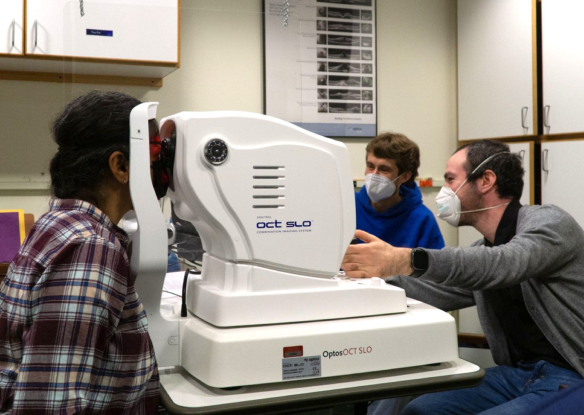

- Principal Investigator:
- Arvind Chandna
Background Amblyopia means blunted sight in the Greek language and is a term clinicians use to describe decreased vision usually in one eye most commonly due to a focusing error (refractive error in one eye, very different from other eye - anisometropia) and/or a misalignment between the two eyes (strabismus or squint). Amblyopia is sometimes called “lazy eye”. This is different than being just near or far sighted which is a refractive error usually similar and in both eyes developing at any age and vision improves instantly on prescribing and wearing spectacles to correct the error.
Amblyopia is the commonest eye condition in children affecting approximately 2 to 3 out of every 100 children. It is known to cause significant social distress especially if accompanied by strabismus. Untreated or persistent amblyopia remains the leading cause of monocular (one eye) vision loss in people aged between 20- 70 years. In adults with amblyopia in one eye there is a four-fold increased risk of losing vision in the unaffected eye due to trauma or disease.
Starting at birth from newborn through childhood the eye and the visual pathways in the brain require a clear well defined focused image from each eye and in synchrony with each other for normal visual development. Focused images are received by the photographic film (the retina) at the back of each eye which in turn sends the information as neural impulses along the optic nerve and vision pathway to the primary visual areas of the brain at the back of the head. Here, after some basic analysis the slightly dissimilar images from each eye (due to the separation of the eyes on the face) are correlated into a single image and sent to multiple visual areas in the brain for further analysis of the visual scene such as color, motion, depth perception and recognition in higher visual function areas finally reaching cognition.
In amblyopia, the eye with the focusing error or strabismus does not undergo normal visual development due to unfocussed images (anisometropia) and/or two completely different images (strabismus) being received and transmitted by the affected eye to the seeing areas of the brain. This leads to reduced strength of connectivity from the affected eye to the seeing areas of the brain resulting in impaired visual functions for attention, letter recognition, motion perception, reading and many others. The eye structures may look entirely normal apart for the misalignment.
If undetected or not treated, amblyopia becomes permanent after childhood. However, the outcome of amblyopia treatment can be highly successful when detected and treated in childhood.
Current Work The Chandna Lab uses steady-state EEG to study the brain's neural responses to a variety of stimuli in children and adults with amblyopia. Our aim is to understand the time-course of the brain's visual functions such as motion perception, face perception, Vernier acuity, and letter acuity. We use a technique called Steady-State Visually Evoked Potentials (SSVEPs) that allows us to mathematically esitmate the threshold when a stimulus becomes perceptable to a person with Amblyopia. Some of the stimuli we use to measure a variety of brain visual functions are demonstrated here.

